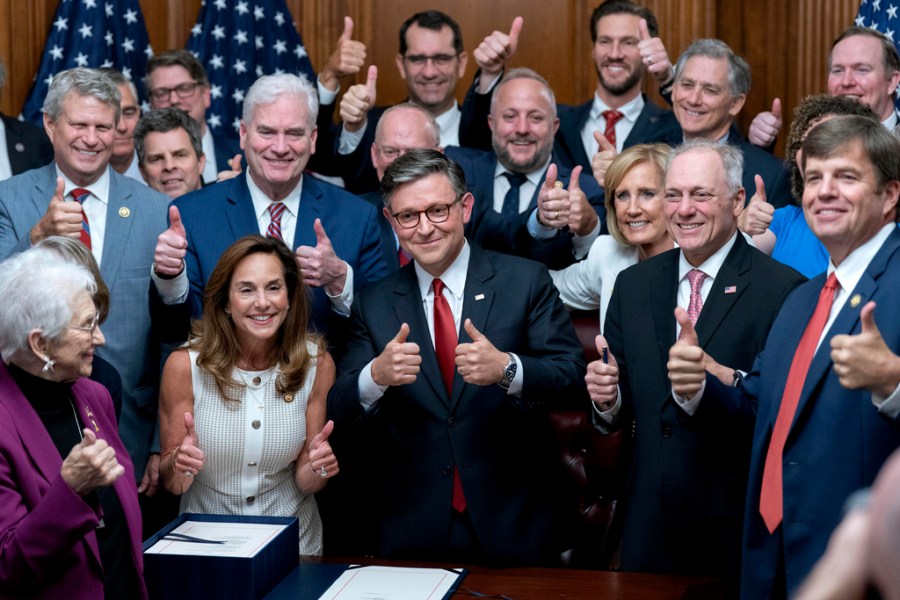Health
New Law Boosts Community Support for Americans with Disabilities

The recent signing of the “One Big, Beautiful Bill” marks a significant step forward in supporting Americans with disabilities. This legislation aims to enhance incentives that facilitate the transition of individuals with disabilities into community settings, where they can thrive and integrate more effectively.
As community-based programs have proven to be both more effective and cost-efficient than traditional large congregate care facilities, the focus now shifts to strengthening these initiatives. According to the U.S. federal government, community care not only improves the quality of life for individuals but also reduces long-term costs associated with institutional care.
Legislative Goals and Community Impact
The primary goal of the new law is to empower those with disabilities to engage fully in their communities. By providing targeted support and resources, the legislation seeks to dismantle barriers that have historically limited access to essential services.
This approach aligns with findings from various studies indicating that individuals with disabilities experience better outcomes when they are integrated into their local communities. For example, a report from the National Council on Disability highlights that community-based living arrangements lead to enhanced mental well-being and social interaction.
Moreover, the financial implications of this shift are substantial. The federal government estimates that transitioning to community-based programs could reduce costs by as much as $1.2 billion annually. This is primarily due to decreased reliance on more expensive institutional care, which has been shown to be less effective in fostering independence.
Challenges Ahead for Implementation
While the signing of the “One Big, Beautiful Bill” signals progress, challenges remain in its implementation. Advocates for disability rights stress the importance of sufficient funding and resources to ensure that community-based programs can expand effectively.
Organizations such as the Arc and the National Disability Rights Network are calling for immediate action to allocate necessary resources. They emphasize that without adequate investment, the potential benefits of the legislation may not be fully realized.
Additionally, there is a pressing need for training and support for service providers to adapt to the new framework. Ensuring that staff are equipped to deliver quality care in community settings is crucial for the success of this initiative.
As the U.S. government prepares to roll out the new measures, stakeholders are urged to collaborate closely. Community organizations, advocacy groups, and policymakers must come together to create a sustainable environment where individuals with disabilities can truly thrive.
In conclusion, the enactment of the “One Big, Beautiful Bill” represents a hopeful turn in disability advocacy. With a focus on community integration and support, this legislation has the potential to change lives for the better, provided that implementation challenges are addressed promptly and effectively.
-

 Technology5 months ago
Technology5 months agoDiscover the Top 10 Calorie Counting Apps of 2025
-

 Health3 months ago
Health3 months agoBella Hadid Shares Health Update After Treatment for Lyme Disease
-

 Technology1 week ago
Technology1 week agoOpenAI to Implement Age Verification for ChatGPT by December 2025
-

 Health3 months ago
Health3 months agoErin Bates Shares Recovery Update Following Sepsis Complications
-

 Technology4 months ago
Technology4 months agoDiscover How to Reverse Image Search Using ChatGPT Effortlessly
-

 Health3 months ago
Health3 months agoAnalysts Project Stronger Growth for Apple’s iPhone 17 Lineup
-

 Technology3 months ago
Technology3 months agoElectric Moto Influencer Surronster Arrested in Tijuana
-

 Technology1 month ago
Technology1 month agoDiscover 2025’s Top GPUs for Exceptional 4K Gaming Performance
-

 Technology5 months ago
Technology5 months agoMeta Initiates $60B AI Data Center Expansion, Starting in Ohio
-

 Technology5 months ago
Technology5 months agoRecovering a Suspended TikTok Account: A Step-by-Step Guide
-

 Health5 months ago
Health5 months agoTested: Rab Firewall Mountain Jacket Survives Harsh Conditions
-

 Lifestyle5 months ago
Lifestyle5 months agoBelton Family Reunites After Daughter Survives Hill Country Floods









